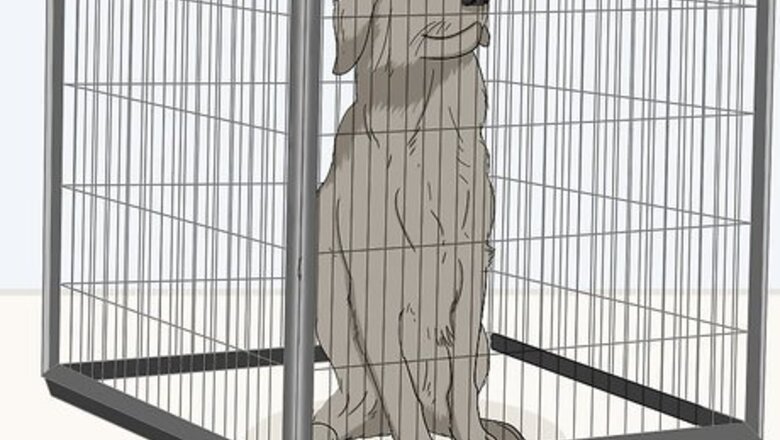
views
Cleaning to Get Rid of Fleas
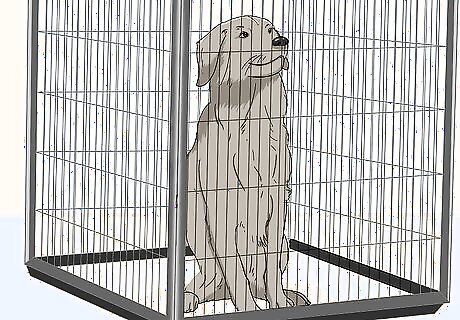
Isolate your pet from people and other animals. If you’ve noticed fleas on your pet, act quickly so that they don’t spread to other animals or people. Place your pet in a bathroom, mudroom, or another space without a lot of soft surfaces where fleas can easily hide. It's best to do this in a room with a door so that your pet won't get near other animals or people. This will keep the fleas from spreading as you work on cleaning the house. Make sure your pet is comfortable. Place water and a favorite toy or blanket in their enclosed space so that they feel safe and calm. Keep your pet isolated until you have finished bathing them and cleaning the house.
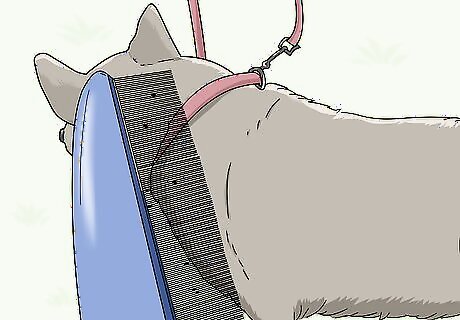
Comb your pet to get rid of their fleas. Spread a sheet on the floor and have your pet sit on it. This will catch any fleas that escape the comb. Use a fine-tooth comb to go through all of your pet’s hair, frequently dipping the comb into a bowl of water that contains a few drops of dish soap. The dish soap will immobilize the fleas. After you’re done combing, empty the bowl of water down the drain. Flush the drain with some extra water to make sure you've gotten rid of all of the fleas. Bundle the sheet in a plastic bag and close it tightly. This will prevent any living fleas from escaping when you carry the bag to the washing machine.
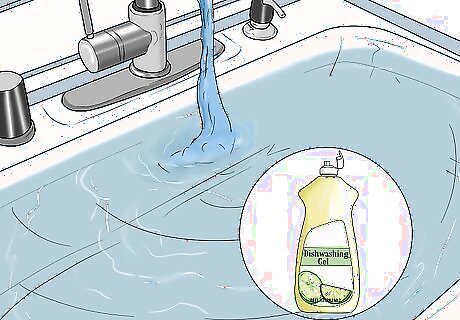
Bathe your pet with warm water and dish soap. Place your pet in the tub or sink where you usually bathe them and rinse them with warm water. Squeeze a couple of drops of dish soap into your palms and rub the soap into your pet's coat. Take care to avoid getting any soap in their eyes, as it could irritate them. Rinse the pet with more warm water, and then dry them off with a towel. Use soap that is mild, dye-free, and fragrance-free. Dish soap is generally safe to use on pets, but ask your vet if you have any concerns. For example, it may not be safe to bathe some types of rabbit.
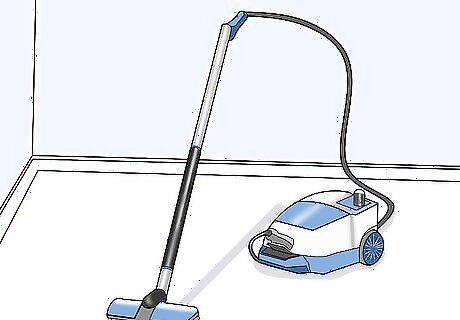
Use a steam cleaner if you have one. Follow the directions on your steam cleaner and use it on the carpets and furniture in your home. This includes couches, curtains, and beds. The high temperature of the steam will kill the fleas and any eggs. It's also a helpful tool for cleaning hard to reach spots, like deep carpeting. Don’t forget the pet beds! If you don’t have a steam cleaner, see if you can borrow one from a friend. It’s also pretty inexpensive to rent one from a hardware or home improvement store. If you can’t borrow or rent a steam cleaner, that’s okay. Just skip this step and go straight to vacuuming.
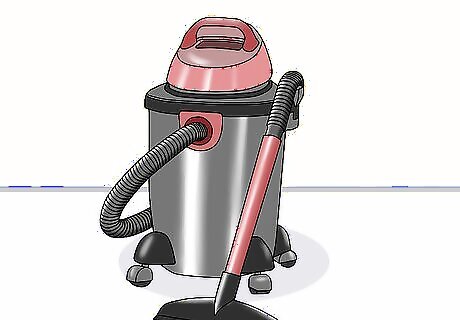
Vacuum your floors and furniture. Run your vacuum cleaner in each room of your house. Make sure to reach all of your floors, area rugs, and soft furniture, like couches. Throw the bag away outside to make sure any surviving fleas don’t escape into your home. If your vacuum doesn’t have bags, take the cannister outside to empty it in the outside trash can.
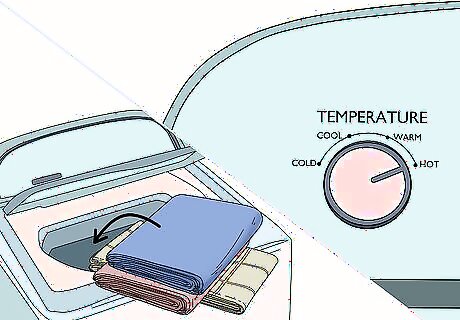
Wash all of your bedding in hot water. Gather all of the bedding from all of the beds in your house. This includes sheets, pillowcases, comforters, and mattress covers. Wash them in hot water with your normal detergent. Also wash any bedding that your pet uses, including their pet bed itself. You should also wash towels and any throw blankets that you use.
Using Inexpensive Home Remedies
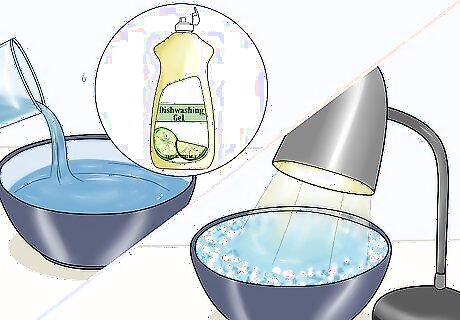
Make a light trap with a lamp and water. This is a simple and cheap way to get rid of fleas. Fill a bowl with water and add a few drops of dish soap. The soap will create a barrier on the surface of the water; the fleas will be able to get in, but won’t be able to get out. Place the soapy water next to the lamp so that the bulb is near the bowl. The light will attract the fleas to the water. You can do this in any room where there might be fleas. You can also use Alka Seltzer tablets in the water to kill the fleas.

Sprinkle diatomaceous earth on your carpets. You might have to spend a few bucks if you want to try this method, but it is still cheap and effective. Diatomaceous earth is a type of sand made from algae that have fossilized. It kills many pests, including fleas. Sprinkle a layer of food-grade diatomaceous earth on your floors, remembering to also hit area rugs. Let the powder sit for 1-2 days and then vacuum it up. This powder is safe for people and animals. You can purchase it online or in box stores. Make sure to empty the vacuum bag or container outside so that any living fleas don’t escape back into your house.

Place banana peels in rooms with fleas. This option is really easy, especially if you already have bananas at home. Just place some banana peels on the floor to attract fleas. The potassium in the peels will kill the fleas. Once the peels start to blacken, throw them away and replace them with fresh peels. If your pet tries to eat the peels, you can just use this method in rooms where your pet doesn’t go. Banana peels are not toxic to pets, but you can check with your vet if you have any concerns.
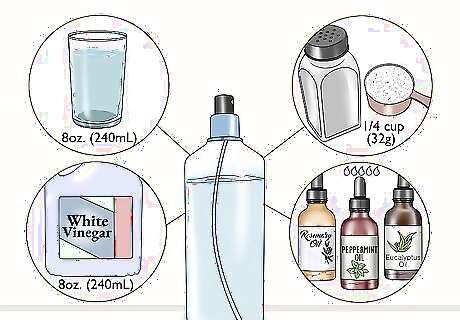
Make a flea spray with essential oils and water. In a bowl, combine the ingredients and stir until the salt dissolves. Then transfer to a spray bottle. Spray furniture, bedding, and carpets once a day for 3 weeks. The ingredients are: 8 fluid ounces (240 mL) warm water 8 fluid ounces (240 mL) white vinegar 1/4 cup (32 grams) table salt 5 drops each of rosemary, peppermint, and eucalyptus essential oils
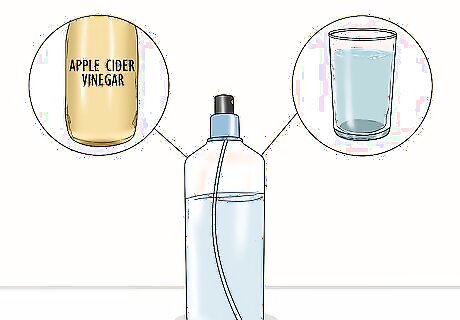
Combine apple cider vinegar and water to make a flea repellant. Fill a spray bottle halfway with apple cider vinegar and fill the rest of the way with water. Shake well and spritz the surfaces in your home. You can also lightly spray your pet to get rid of any fleas on them.
Preventing Fleas
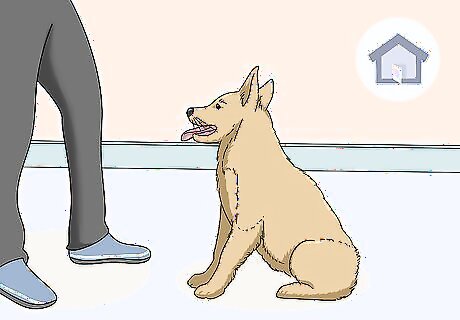
Keep your pets indoors as much as possible. Dogs and cats are mainly exposed to fleas when they are outdoors. Of course, you need to walk your dog, but try not to let them hang out outside more than is necessary for their health and well-being. How much outdoor time is necessary will depend on your dog. It will depend on your dog's breed and personality as to how much outside time they need. Talk to your vet if you need some guidance. If you have a cat, consider making it an indoor cat. EXPERT TIP Ray Spragley, DVM Ray Spragley, DVM Veterinarian Dr. Ray Spragley is a Doctor of Veterinary Medicine and the Owner/Founder of Zen Dog Veterinary Care PLLC in New York. With experience in multiple institutions and private practices, Dr. Spragley’s specializations and interests include non-surgical management of cranial cruciate ligament tears, Intervertebral Disk Disease(IVDD), and pain management in osteoarthritis. Dr. Spragley holds a BS in Biology from SUNY Albany and has a Doctor of Veterinary Medicine degree (DVM) from Ross University School of Veterinary Medicine. He is also a Certified Canine Rehabilitation Therapist (CCRT) through the Canine Rehab Institute as well as a Certified Veterinary Acupuncturist (CVA) through Chi University. Ray Spragley, DVM Ray Spragley, DVM Veterinarian Check dogs for fleas. Signs that fleas may be present include scratching excessively, losing hair, or irritated skin. You can gently brush your dog's coat onto a paper towel to catch black specks, which could be flea waste. If rusty stains appear when you wet the paper towel, it likely indicates a flea infestation needing treatment.
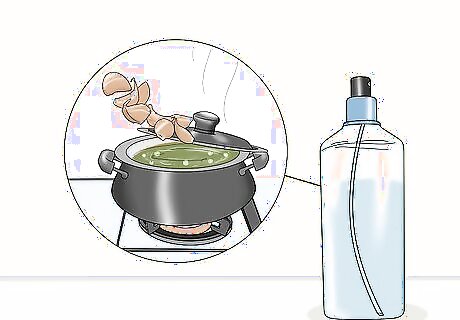
Spray your yard with garlic water. Garlic is a natural flea repellent. To make this simple flea repellent, chop 8 head heads of garlic. There’s no need to peel. Place the garlic in a large pot and pour in 1 gallon (3.8 liters) of nearly boiling water. Cover the pot and allow the mixture to steep for 12 hours. Pour the mixture through a strainer and place the water in a spray bottle. Spray the garlic water around your yard, making sure to spray the areas nearest your home. Don’t soak the yard. A little garlic is fine, but too much could kill helpful insects. A little exposure to garlic won't hurt your pet, but if you have any concerns, you can keep them away from the area that you've sprayed.
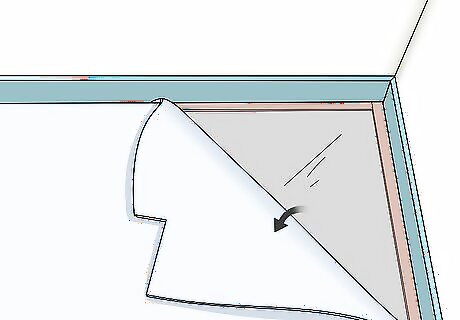
Consider removing the carpet from your home. Carpet can hide a lot of fleas. Your best bet is to consider getting rid of any carpet in your home. Tile and hardwood floors are great alternatives. If you must have carpet, consider using Berber. It is shorter and easier to keep clean than longer carpets. No matter what type of flooring you have, make sure to vacuum and clean it 1-2 times per week.

Talk to your vet about flea collars and medications that prevent fleas. The next time you're at the vet, ask them their advice for preventing fleas. There are a wide variety of flea collars and medications that might be right for your pet. Your vet will also be able to give you a sense of how much each of these options generally costs.




















Comments
0 comment